See the History of Ticker-Tape Parades Beneath Your Feet on Broadway’s Canyon of Heroes
Uncover the history of NYC's confetti-covered parades that have been running since the 1880s!


Ballet is undoubtedly one of the most beautiful forms of expression in our modern world. But with beauty, there often comes pain. Artist Karon Davis knows this adage well. In her new exhibit, Beauty Must Suffer, Davis showcases the dark and the light sides of the world of ballet through sculptures thoughtfully placed in various rooms of Salon 94, an art gallery that now occupies the former Upper East Side home of sculptor Anna Hyatt Huntington.
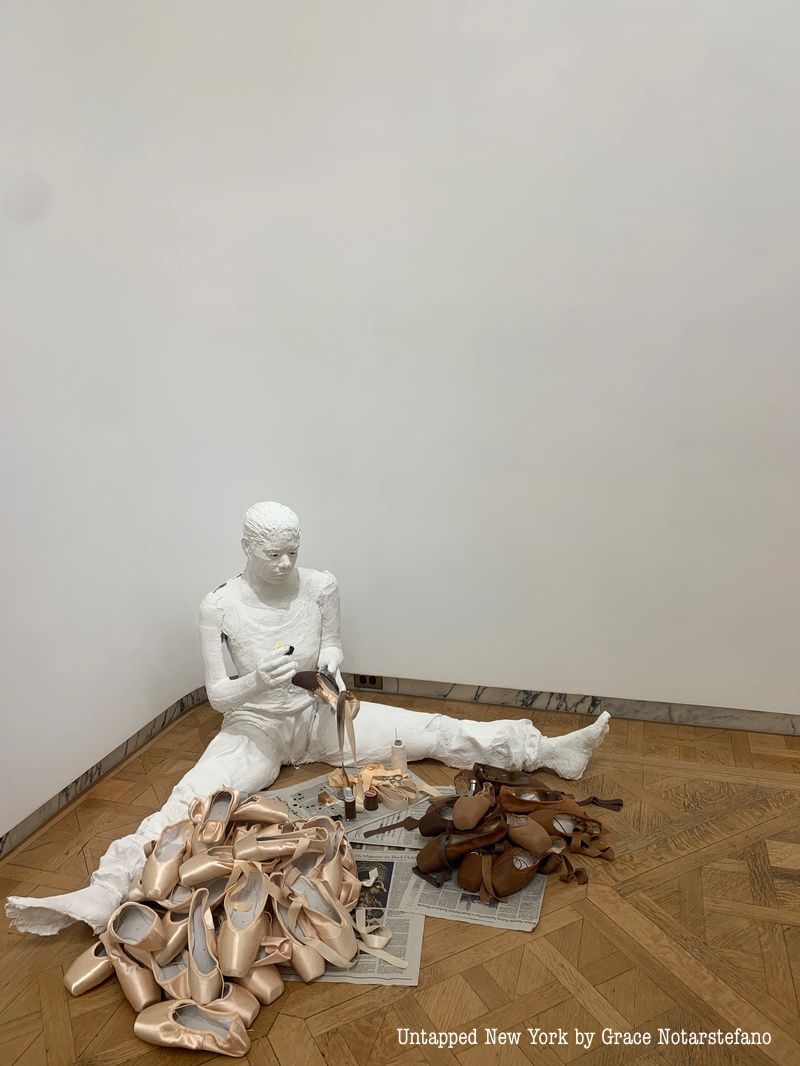
3 East 89th Street was originally built as an addition to the home of Anna Hyatt Huntington (sculptor of Riverside Park’s Joan of Arc statue) and her husband Archer Milton Huntington, a philanthropoist who founded the Hispanic Society of America in New York City. Designed by noted architect and decorator Ogden Codman and consrtucted between 1913 and 1915, the addition stood behind the couple’s home at 1083 Fifth Avenue. It contains rooms that the Hungtingtons used for entertaining and exhibiting Anna’s art. The townhouse was donated to the National Academy of Design in 1940.
The building has since been renovated and restored by architect Rafael Viñoly and many original details have been preserved. The artistic legacy of the Huntingtons lives on as the building now serves as the headquarters of Salon 94, Salon 94 Design, and S94+, a non-profit arts initiative.
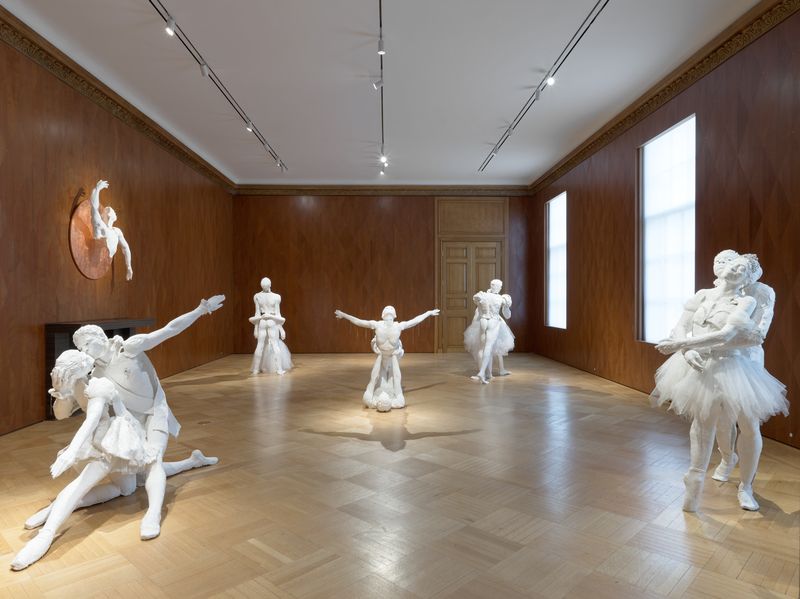
This fall, the halls which were once filled with Huntington’s sculptures are filled with works by contemporary artist Karon Davis, whose exhibit explores the beauty of and the pain endured by ballerinas. Davis’ parents met while dancing. Her father was known as one of the last song-and-dance men around, and her mother was in the world of showbiz as well before the kids came. Karon studied ballet and modern dance in college, soon after heading to Los Angeles for film school. She soon met and fell in love with famous artist Noah Davis and started a life together in the art world.
Soon after the passing of her husband, Karon turned fully to art. She was engulfed in it completely, thereafter finding her niche in sculpture. She specializes in cast figures made by wrapping real people with bandages soaked in plaster of Paris. Her first gallery exhibition in the wake of her husband’s passing featured a giant tissue box and sculptures of exhausted-looking nurses, each stuffed with medical bills.
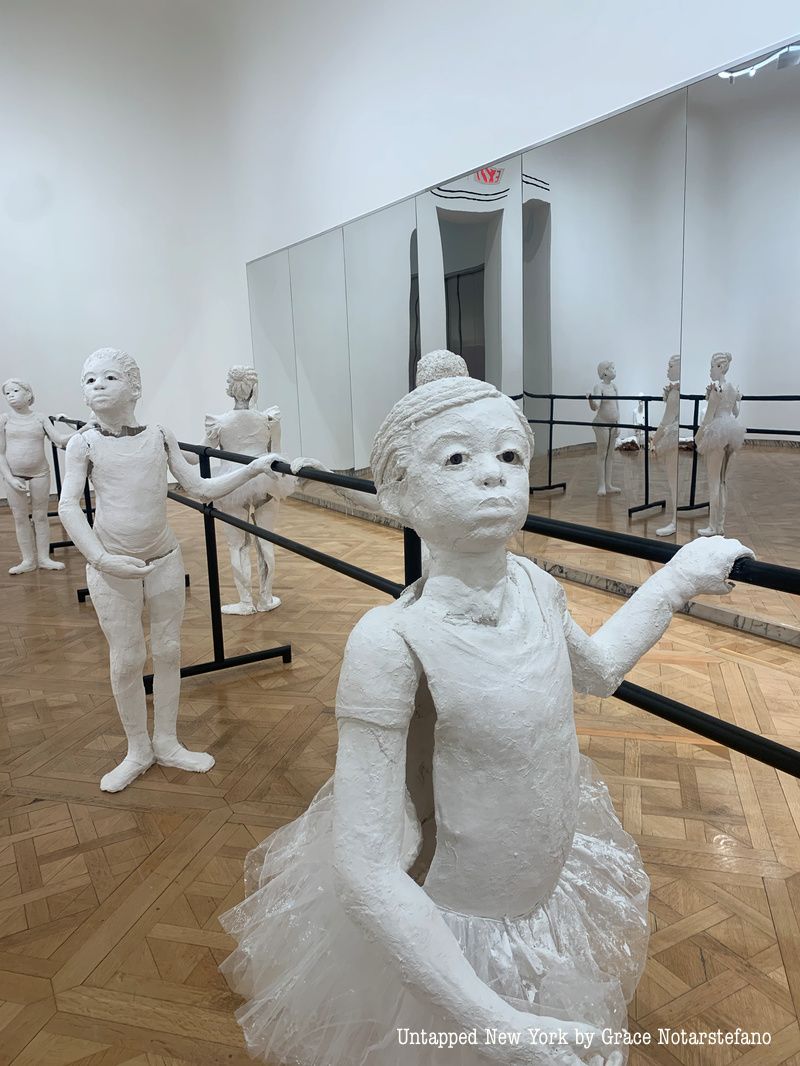
Walking through Davis’ Beauty Must Suffer exhibit while it is empty is a must-do experience. The white of the plaster figures stands out against the architectural details of the gallery rooms. It is juxtaposed against the colors that appear in the pieces, whether it be pink pointe shoes or red roses. The white figures also seem to resemble classical sculptures of the Greco-Roman period, perfect examples of the typical Western conception of beauty. With the lack of color, every ballerina’s features are smoothed out and similar, making everyone look like one another. Ballet is all about precision and being synchronized, but it is a common issue in the craft that the pressure to look the same becomes a source of pain for many ballerinas, especially ballerinas of color, whom Davis focuses on in this exhibit.
The opening room features a typical ballet studio, the barre lined with young ballerinas and their first encounter with dance. They are mostly still whole pieces of plaster, not yet broken apart by the physical and mental stresses of ballet. In the corner of the room, we see an older dancer painting her pale pointe shoes to match her darker skin tone. She is older, more broken, and has a deeper understanding of the experience of being an African-American ballerina that the younger kids do not have. The next room is home to a fascinatingly large pile of pointe shoes flowing from the wall into a heap on the ground. Looking up close, it is easy to see that there are a few darker shoes, peaking through behind the lighter ones.
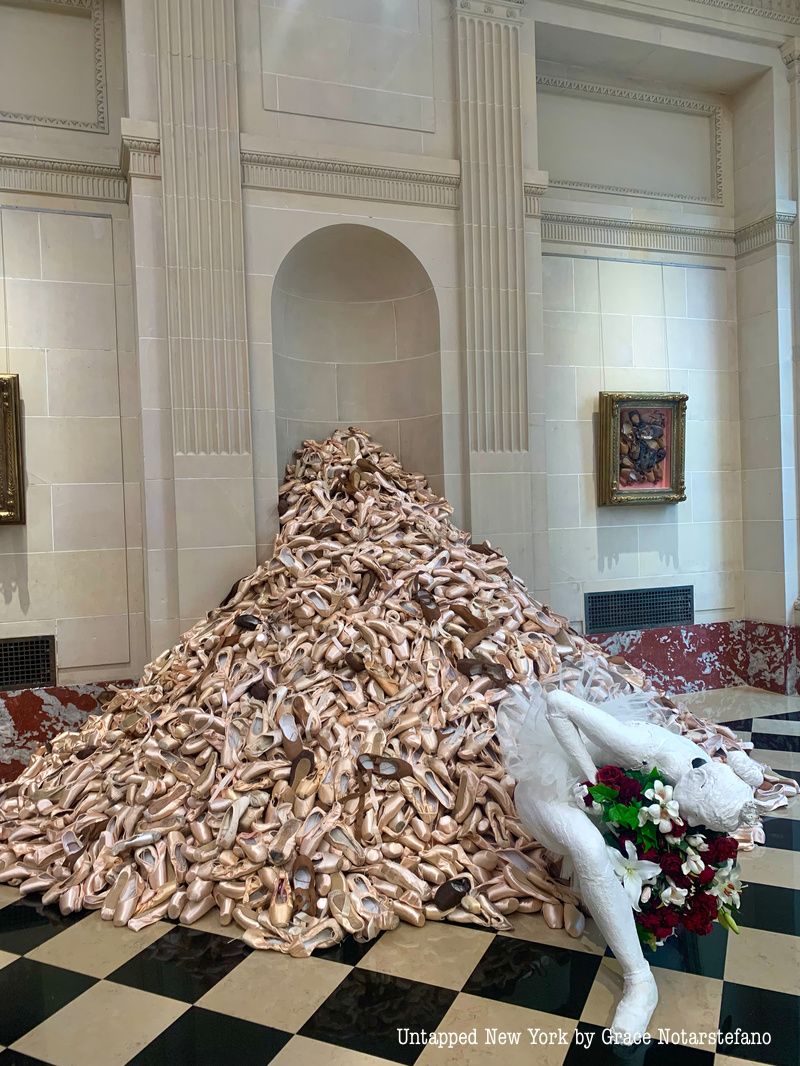
In the corner of this beautifully lit room, guests can see a ballerina smoking a cigarette. The first realization of what she is doing is shocking. Ballerinas are known for being the epitome of wellness, never overweight and never harming their health. The sculpture lets viewers take a moment and think about why this imagery is so shocking and why ballerinas are held to such high expectations.
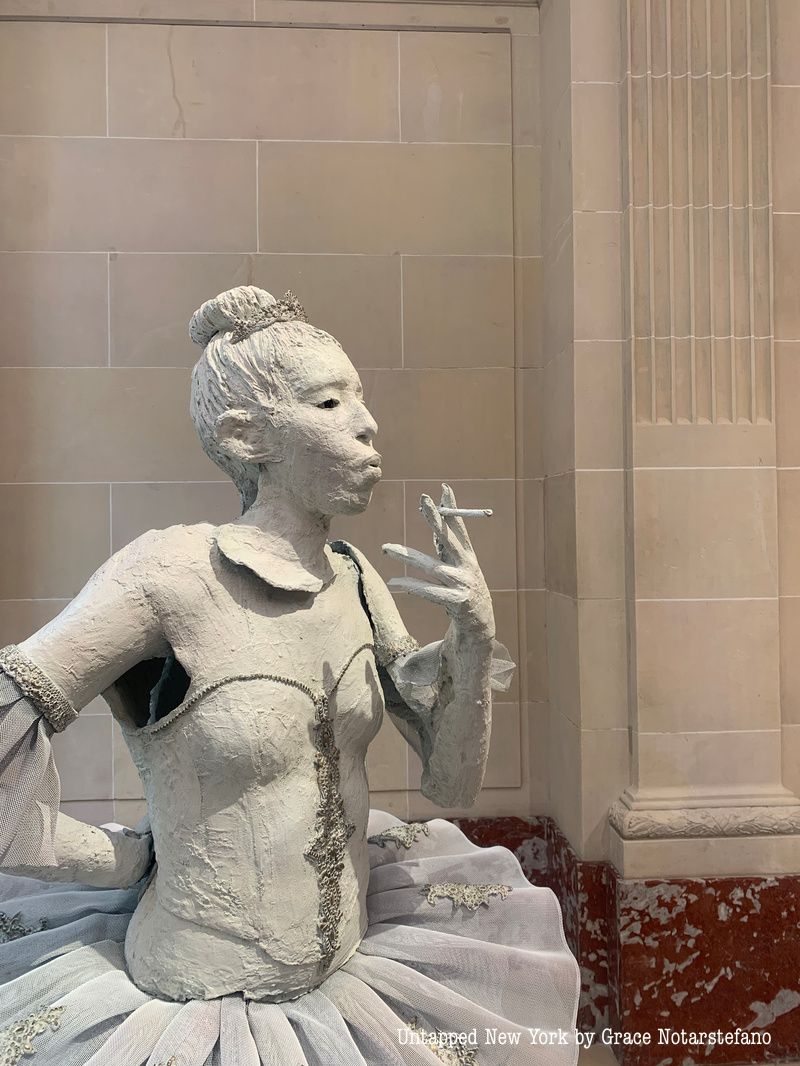
Davis includes her exhibit a rendition of the story of Echo and Narcissus. This Greek myth of unrequited love constantly pops up in art and literature, its spirit finding a new home here in ballet. The two ballerinas are in the midst of a beautiful dance of longing and despair.
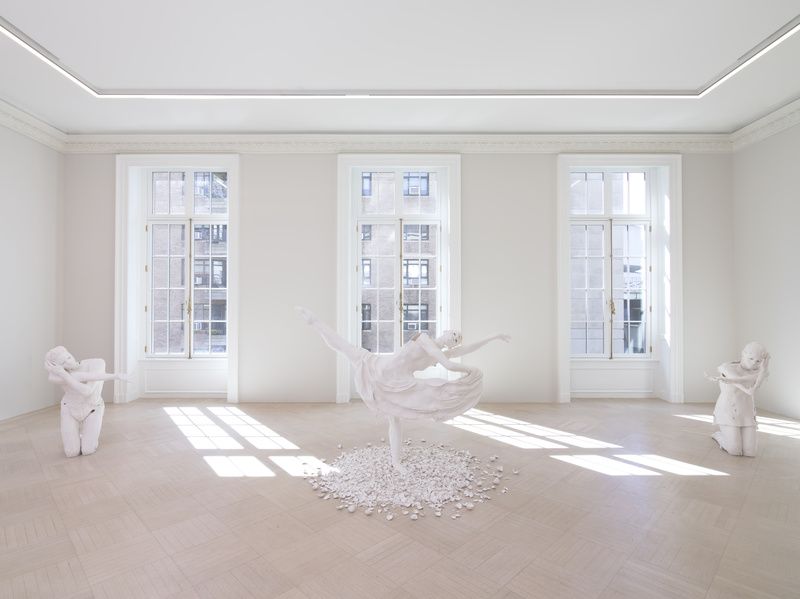
At its core, this exhibit is a commentary on the Western views of ballet. The beauty standards have remained stagnant for many years; to be tall, thin, and perfect. Ballerinas must stay at the barre in front of a mirror, practicing until perfection is achieved. They must break their bodies and cover up their pain, all in the name of beauty. Davis perfectly crafts her sculptures to show us the price of this pain. They are broken apart and never fully intact. The figures have glass eyes open throughout every scene, looking directly at what they have done to themselves yet staying in place nonetheless.
Davis’ exhibit at Salon 94 coincides with Curtain Call at the High Line. This large-scale bronze portrait of a ballerina taking her final bow is inspired by the artist’s childhood growing up on stage. The work is part of an ongoing series of dancers that Davis is currently working on, an homage to the dancing past of her parents and sister. Beauty Must Suffer will be on display at Salon 94 until December 23, 2023. Curtain Call will be on view from October 2023 to September 2024.
Next, check out 15 Must-See Art Installations in NYC
Subscribe to our newsletter